Charoite: who suits, meaning and properties
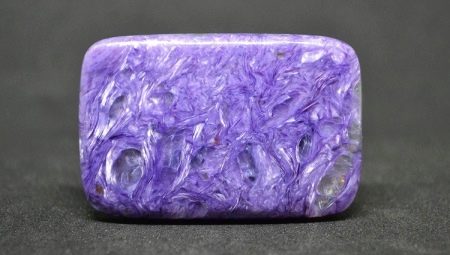
Usually, speaking about ornamental stones, they mention their ancient past, shrouded in secrets and legends, remarkable events. Charoite does not correspond to this scheme, if only because it was discovered in the prosaic XX century. But this does not make the knowledge of the properties of this mineral less relevant.
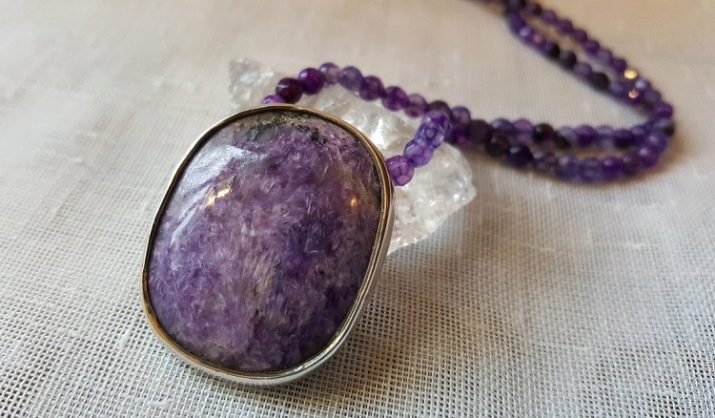
A bit of history
A stone such as charoite was first discovered in the area of the Chara River. His discovery was largely an accident. It was just that a geological survey was taking place in the relevant area. Initially, the newly discovered mineral was conventionally called cumington schist. Very soon, already in the early 1970s, a complete description of the basic properties and characteristics of the mineral was compiled.
The first deposit of charoite (the word means a reference to that very river) was discovered in 1973. The stone is truly unique: the slightest primary deposits or placers have not been found anywhere else in the world.... Experts have not yet fully figured out the origin of the mineral. One version associates it with volcanic processes. Others point out that charoite originated from alkaline compounds.
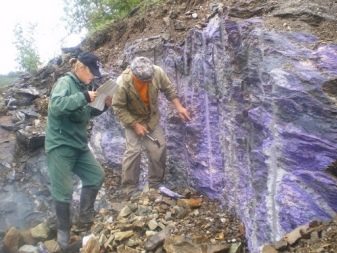
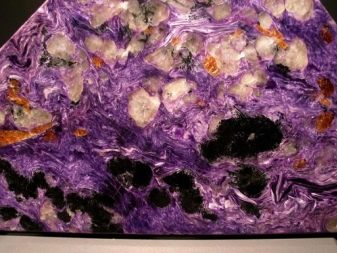
Geological literature indicates that charoite was found in the southwest of the Aldan shield. If we proceed from the existing administrative division, then this is the intersection of the Irkutsk region with Yakutia. Due to poor knowledge of the geography of the area, many people think that there are two deposits there. In fact, it is only one, and it is located on the watershed between the Chara and Tokko rivers. The total area of deposits reaches 10 sq. km.
Although not a gemstone, charoite looks great. The bulk of the rocks in this deposit are charoitites. They are painted in lilac-purple tones. It is surprising that charoite was found in the Far North, so the search for it was carried out in extremely difficult conditions.
Lilac minerals were discovered initially (according to some sources) in the post-war period.

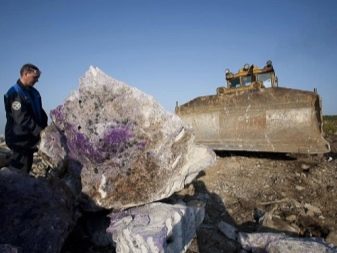
Research in Murunskie Goltsy carried out by V. Ditmar's expedition was continued in 1959. But then the level of equipment of geological prospecting has already noticeably changed, its material and technical base has grown. Instead of a group of people making their way through wild forests and mountains, a large team of trained specialists went in search. The base point was a village built in the middle of the forest, and an airfield was also added to it.
The geological party had at its disposal a mineralogical research laboratory and a workshop for grinding and cutting samples. Such a complex preparation (including the transfer of the scientific base to the search site) was due to the exceptional complexity of the mountain range. In addition to charoite, other unique minerals were discovered in those places that had previously remained unknown. Despite all the efforts, the search was difficult and difficult. The work was carried out during the whole daylight hours, the professionals had to carry out the analyzes of 100% of the samples extremely quickly, otherwise the geologists would not have been able to correct their searches quickly enough.
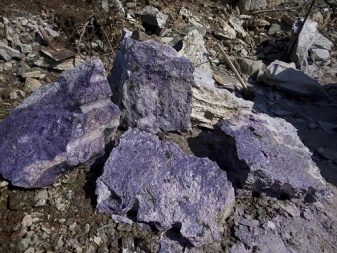
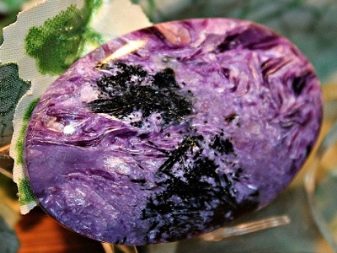
The State Commission on New Minerals was initially not going to approve the discovery. Some of its representatives felt that physicists should first get involved. This was necessary in order to accurately establish the properties of elementary cells. But charoite has a fine aggregate structure. The physical methods of that time did not allow to properly study this mineral.
For a whole year, the leading physics laboratory diligently worked on samples. And finally, a verdict was delivered - nothing could be done. Other specialists, mineralogists, got down to business. They again went to the Murun massif and began to study the issue of deposits in more detail.
Searches took place strictly within the massif, and as a result of research, it was possible to find out that there are no areas containing uranium at the only deposit in the world.
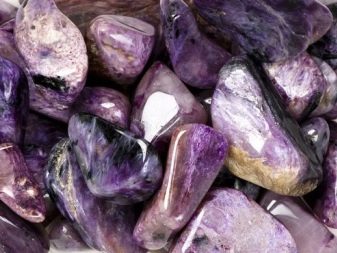

Already the discoverers drew attention (and their colleagues in geology shared this opinion) that charoite was destined to have a great finishing and jewelry future. The problem was different - no one had yet imagined how large the deposits of the mineral were, how much raw material could be expected. In the process of research, it was possible to find a mass of blocks lying on the surface. Also field outcrops made it possible to establish a number of bedrock outcrops to the surface. As a result, it became clear that it makes sense to conduct a deeper search.
Curiously, it was originally planned to give the stone the name "Kanasit". But industrial production and the subsequent sale of decorative products demanded a more euphonious name. After much discussion, the word "charoite" was finally proposed. Opponents objected to this, citing NATO that Chara itself was more than 20 km away from the field. However, the criticism was rejected.
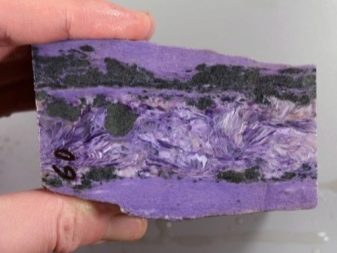
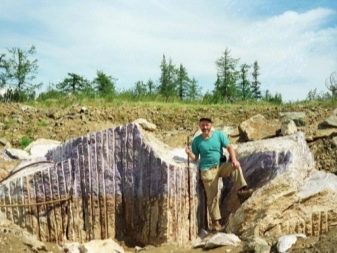
It is also worth emphasizing that in the priority application sent to the international commission for new minerals, the stone was called charait. In general, the application was approved, with the only amendment that the letter a was changed to the letter o. This was due to the fact that otherwise there would be an exact match with another natural stone in English transcription. It is curious that in a number of foreign reference publications they began to write the name of the river itself incorrectly. By that time, it was finally possible to conduct a study of elementary cells.
But suddenly another problem arose - the international commission received an application from one of the American specialists who claimed to have discovered an identical mineral in Yakutia.Formally, its name was completely different, but the chemical composition exactly coincided. I had to file a protest and enter into proceedings. As a result of the submission of convincing evidence, the priority application was approved.
Officially at the international level, charoite was approved in the nomenclature of minerals in 1977.
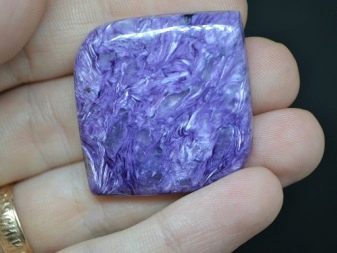
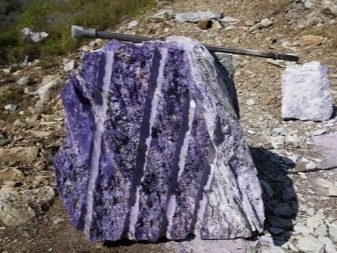
But his story did not end there. It continues. The massif where charoite was once found will provide the basis for the work of several more generations of geologists. The vast family of charoitites is growing steadily. And there is no doubt that researchers will be able to dramatically expand it in the coming decades.
In addition, if the mineral composition of the rocks has already been thoroughly investigated, then their genesis will also have to be established. Without knowledge of the process of the origin of the mineral, it will not be possible to say for sure whether it is possible to find analogues in other localities. Probably, chronic failures in their search are due precisely to the fact that no one knows exactly what and how to look. So far, the bulk of professionals are inclined to conclude that charoite appears due to metasomatic processes.
However, one cannot exclude the possibility that the very process of stone formation is unique and has not yet been described.
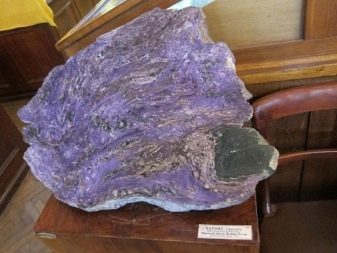

How to wear?
Charoite products are valued primarily because of their rarity and unique beauty. Less often, attention is paid to the mechanical characteristics of the mineral. Attractive aesthetic properties are associated with:
- the grace of the processed samples;
- external shine;
- specific optical parameters;
- unique color;
- transparency of the stone;
- pattern (but natural ornament can be seen only on opaque specimens).
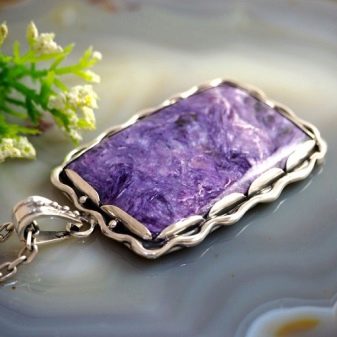

Charoite's persistence is expressed in its various parameters. The stone is not only hard, but also resistant to moisture and aggressive substances. Charoite is very viscous and can retain its color for a long time. The stone is well processed and looks great in both large and small products. It is used in cabochon inserts and in flat inserts in brooches, pendants and rings.
Still, the cabochon is considered the best option. Charoite by people keen on magical practices is considered a symbol of a stable and calm life. It is considered a suitable tool for those wishing to get a measured life. In a sense, the heterogeneity of color symbolizes the opportunity to change the outlook on life.
Of the extrasensory properties of the stone, it is often called its ability to provide balance and prudence.
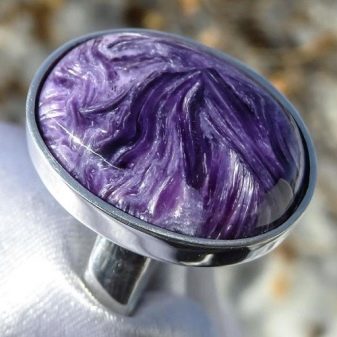
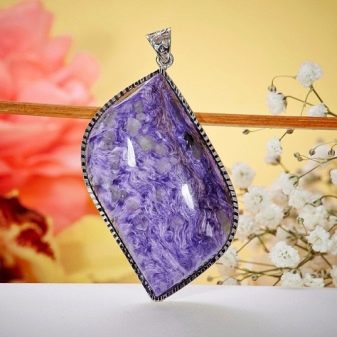
It is also often mentioned that it activates intuitive properties and increases the intellectual level. The mineral is theoretically suitable for those who wish:
- overcome creative and life crises;
- to increase the productivity of work;
- find a way of life self-realization;
- find other people (for single people) or strengthen family and friendships;
- avoid despondency and loss of strength, emotional exhaustion;
- add harmony;
- cope with stress, insomnia;
- protect yourself from apartment and street thieves;
- get rid of bad habits of various kinds.
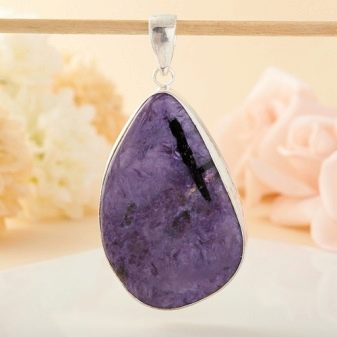

Specialists in the field of extrasensory perception often argue that the "magical parameters" of a charoite will increase if it is inserted into silver, or at least simply hung on a chain of silver. But the gold frame is not recommended to use. InoIt is argued that jewelry made from charoite is indispensable for hypertensive patients, for those suffering from nervous disorders. It is often mentioned that small charoite balls should be pinched and rolled gently in the palms of the hands.
As if it helps to get rid of stress and helps to become calmer. Wearing pebbles in the form of rings or bracelets is considered a means of lowering blood pressure and muscle relaxation. The polished charoite pyramid can be worn at the level of the kidneys, liver or pancreas.In this case, the risk of colic and other disorders seems to be reduced.
Some lithotherapists believe it is necessary to use the stone to eliminate pain in the muscles, head and bones.
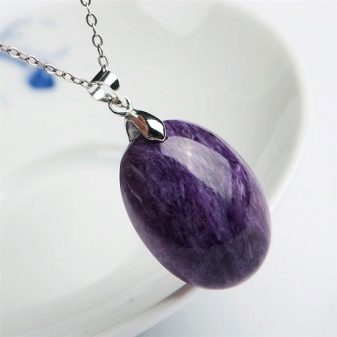
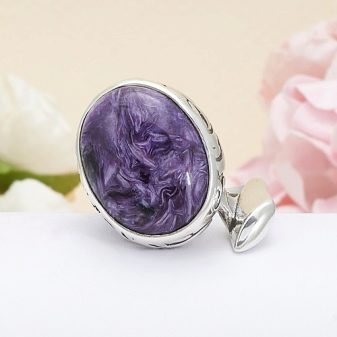
Mystics and psychics cannot yet agree among themselves what other properties and parameters to attribute to the charoite. What is absolutely certain in their opinion is that cut and rough stones have approximately the same properties. According to experts in these areas, charoite is compatible with creative people. He helps them to reduce unjustified mood swings and find themselves. For some not entirely clear reason, the exotic stone is advised to be worn by creators on the right hand.
Charoite is not recommended for introverts. It is not suitable for people with a phlegmatic or melancholic temperament. It is recommended to buy a stone for Aquarius and Gemini, but it is especially praised for Libra. Charoite goes well with turquoise, pink quartz, jasper and amethyst.
It's a bad idea to combine it with carnelian, malachite and sardonyx.
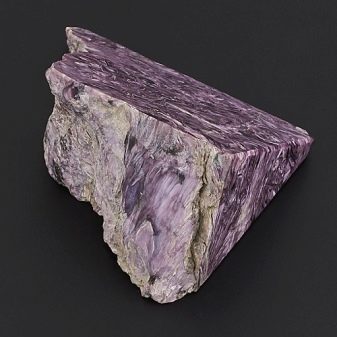

Place of Birth
According to the norms established by the regional government, it is prohibited to export more than 100 tons of charoite from Yakutia per year. Since the real demand is clearly higher, then even taking into account the export from Irkutsk, the market value of the product is very high. Elsewhere, as already mentioned, charoite is not mined in Russia or in other regions of the world. In other localities, sometimes only outwardly similar raw materials are mined.
Some forgers try to pass him off as a real charoite.
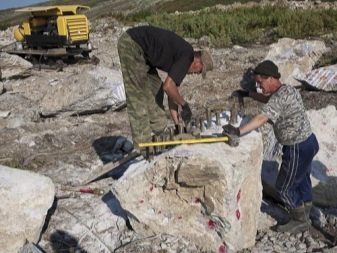
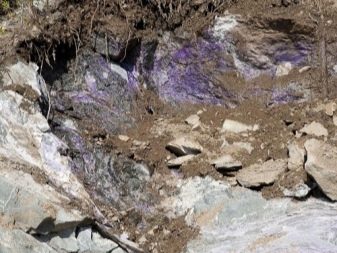
The final price is directly influenced by the shade of the product. Even in the case of an untreated stone, the cost of 1 kg can range from $ 30 to $ 150. At the same time, in the processed form, the mineral becomes noticeably more expensive. It has become quite common to buy rings or earrings for $ 25-30. Beads are even more expensive - only $ 5 per gram.
If you want to buy a table clock in a charoite shell, you should not count on a price of less than $ 1000. Anything cheaper is fake... The most expensive item is vases. With a height of 0.3 m, 1-16 thousand conventional units will have to pay for them at foreign auctions.
The exact price is determined by the grade and color of the mineral.
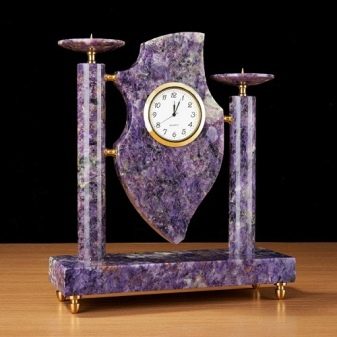
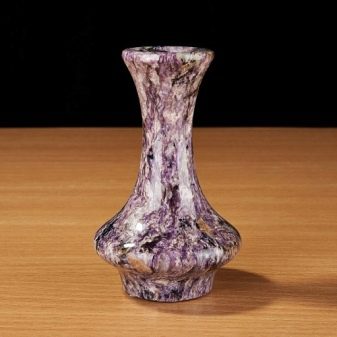
Physicochemical parameters
Charoite is a mineral belonging to the branched chain silicate group. It is characterized by the complexity of the chemical composition. In the laboratory analysis of the stone, the presence of the following was found in it:
- barium;
- rare earth components;
- strontium.
The unusual lilac color of the stones is due to the presence of manganese. Thanks to the many fine fibers, the processed charoite shimmers with specific patterns. Their tonality is almost incredible. More than 100 subspecies of charoite are known. For the convenience of classification, they are classified into several main groups.
Only the highest quality stones used in jewelry are included in the "Extra" category. Such minerals are characterized by an exceptionally graceful luster; patterns are formed in the form of clear lines. The presence of any inclusions is completely excluded. The first grade includes ornamental stones and raw materials for jewelry. The mineral does not shine too much, all layers are colored the same or almost the same.
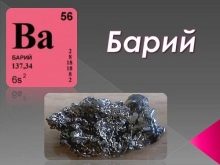
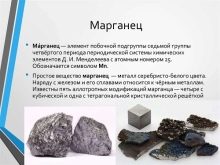

Second-grade charoite is used only in handicrafts. It is almost non-shiny and may contain 16% foreign matter. The third grade (charoitite) contains up to ¼ unnecessary components. It is used for decorative cladding in the form of finishing plates. In terms of physical characteristics, charoite is very close to jade.
But only it has not green, but purple, light lilac color; it can also be of all intermediate shades. Large charoite is extremely rare. The specific gravity ranges from 2.54 to 2.59. The stone can be completely or partially opaque. Its hardness ranges from 6 to 7 points on a conventional scale.Turquoise, pearls, rose quartz, opal, jasper, zircon, amethyst are considered a good combination for charoite. Stones that do not go well with it - beryl, malachite, carnelian, sardonyx.
Aquamarine, jade and ale Mohs amber can be considered a neutral combination.
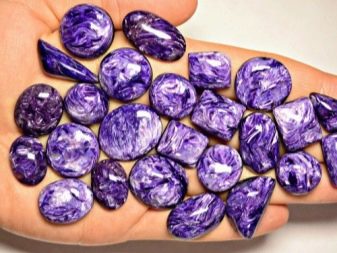
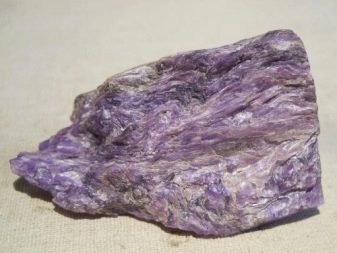
Some samples of charoite are distinguished by increased radioactivity. This is due to the presence of thorium impurities. Normally, all specimens transferred to the jewelry and finishing industries are subject to instrumental measurements. If charoite is colored in a lilac tone, then this indicates the presence of manganese. If the composition of the stone includes manganese-iron compounds, then a pink or cherry color is obtained.
A beautiful honey-brown tint is created by ferric iron. Samples with a radiant pattern look best. This type means that there are almost no impurities inside. The "landscape" structure is named so for its characteristic plots. Stones with such a surface form part of the collection of the Far Eastern Geological Museum.
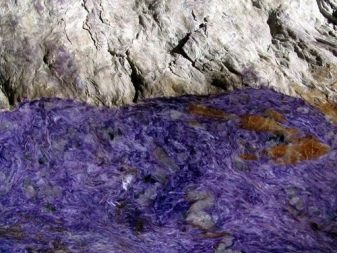
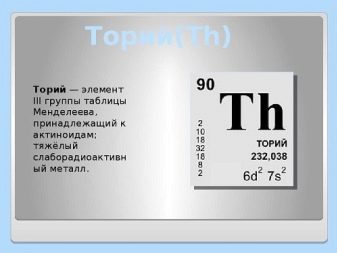
Healing and magical effect
Speaking about the meaning for a person, one cannot ignore those popular mythological ideas that surround charoite. So, astrologers claim that the mineral is good for Libra. Their use of the stone will allow them to become more confident and speed up the adoption of the required decisions. You will also be able to get a fair amount of energy.
Astrologers recommend the stone to lonely Libra as a means of establishing contacts, increasing trust. Aquarians, according to the same astrologers, can count on such a useful property of charoite as compensation for excessive emotionality and suppression of eccentricity. For this zodiac sign, they promise even greater determination and accustoming to responsibility.
And if you wear the stone continuously, as if you can become calmer and wiser.
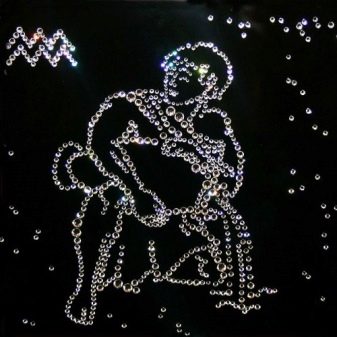

Gemini is often told that charoite will make it easier to comprehend their inner self and come to spiritual harmony. Based on the recommendations of most astrologers, it is worth pointing out that they do not recommend the stone to Taurus and Scorpio. However, there are so many traditions and trends in this craft that it is simply impossible to figure it out. Fans of the mystical and enigmatic can also take into account the recommendations on the names of the carriers. Mineral can give:
- Elizabeth - protection from outside temptations, additional gentleness of character;
- Lydia - a guarantee of spiritual purity and deep wisdom;
- Ruslan - protection from ill-considered steps;
- Borisam - health promotion and extra luck.

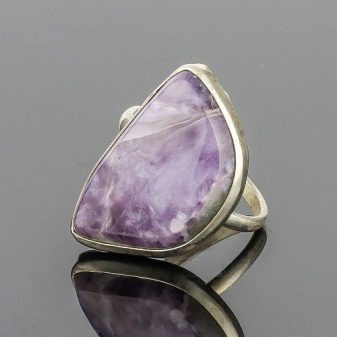
An important role in evaluating charoite is played by its color. The purple tone is considered suitable for people inclined to philosophizing and contemplation in general. It is also recommended for those who value tranquility and privacy. Charoite managed to become a symbol of home comfort and family hearth in a short period of time. Other mystical and irrational properties are noted:
- better control of the situation;
- flexible response to the "prompts" of the external environment;
- strengthening of the intuitive beginning;
- supporting the development of talents and abilities.

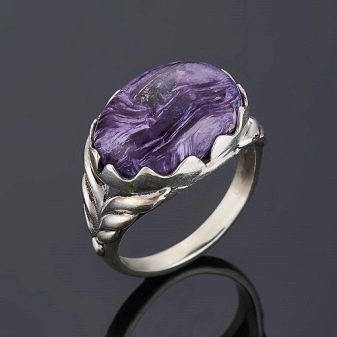
Some people claim that charoite also has medicinal properties. It is assumed that it removes mental stress and improves memory, strengthens the immune system. Also, this mineral is considered suitable for combating nervous fatigue, to support the vital functions of the body as a whole. It is also suitable, presumably in the fight against headaches, with high or low blood pressure.
Several recommendations indicate that charoite can speed up the healing of bone fractures. He is credited with the ability to stabilize the work of the pancreas and intestines. To suppress local inflammation and pain, it is advised to apply a unique stone to the affected areas. It is advisable to wear charoite bracelets for those who suffer from mental and nervous disorders.
It is also believed that the mineral increases the efficiency of creative work, bestows inspiration.

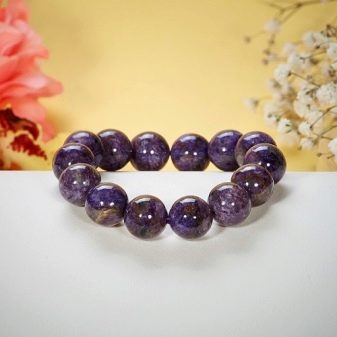
How to care?
Often a situation occurs when the charoite fell and cracked. Any blows to it are categorically unacceptable. It is necessary to wash the mineral only in warm water, where no detergents are added. Cleaning is carried out without abrasive substances.
Rubbing with an exceptionally soft cloth.
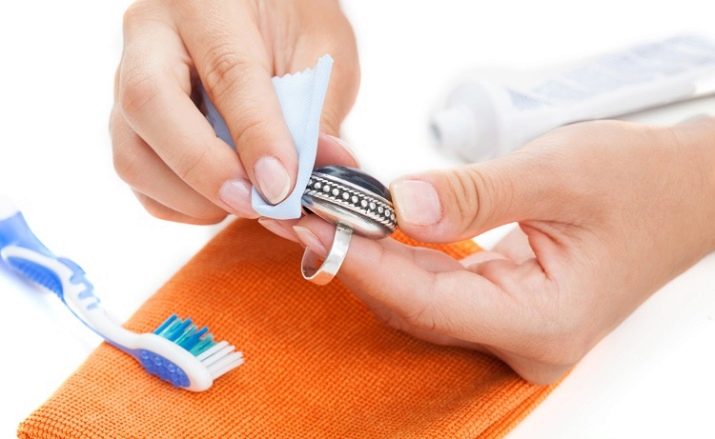
Beautiful examples
The charm of semi-precious ornamental stone has made it very attractive in souvenir production. Caskets and key rings are made of charoite. It is not uncommon to see vases and other decorations for guest rooms. In Irkutsk, they plan to make a room entirely of this mineral. Preliminary calculations show that it will take (along with all accessories and furniture) up to 20,000 kg of gem.

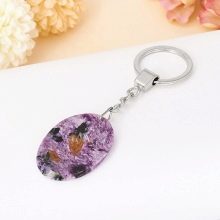

You can find out about the properties of the charoite stone by watching the video mute below.








